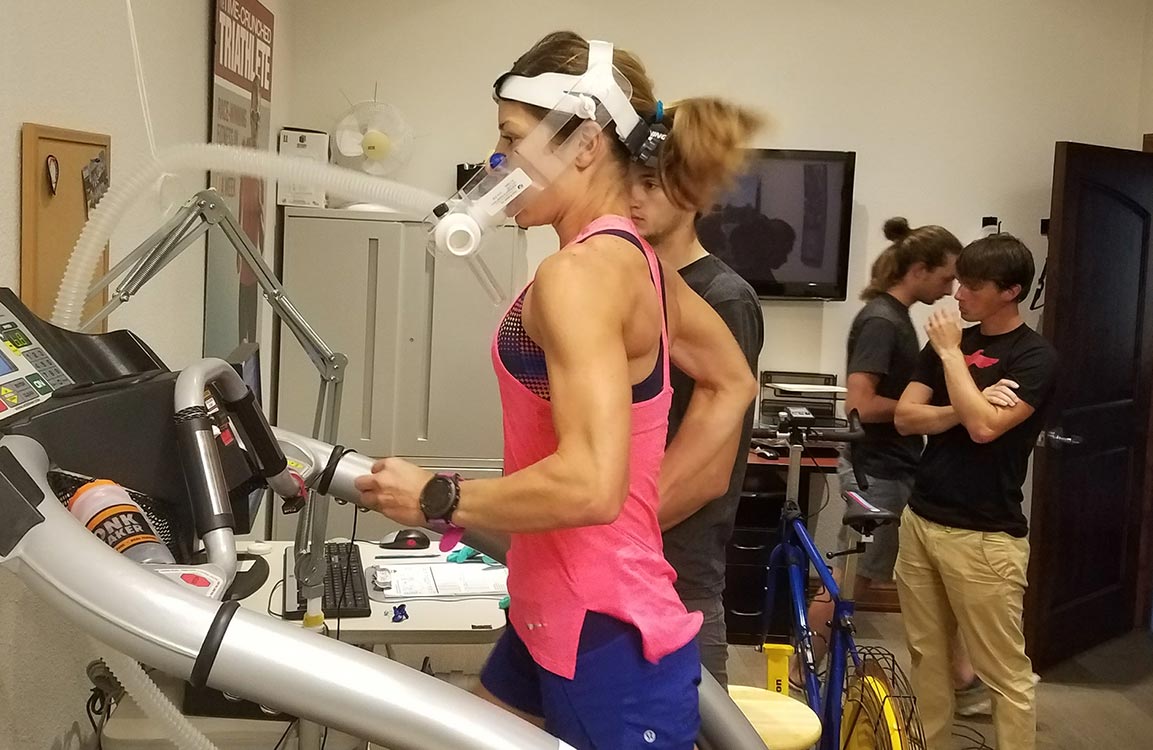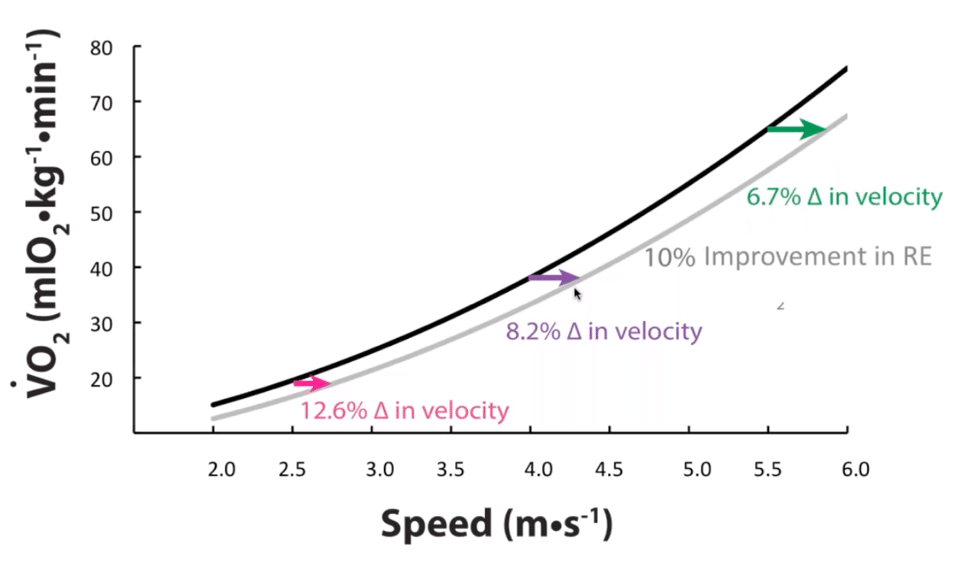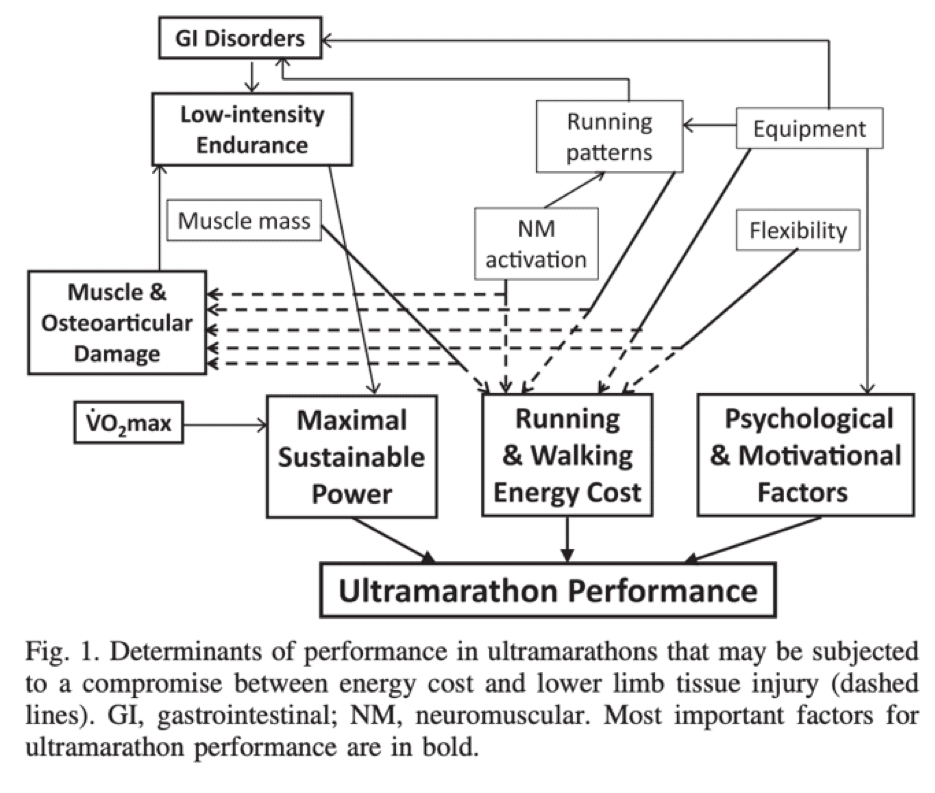
Everything You Wanted to Know About Running Economy in Ultrarunning
By Jason Koop,
Head Coach of CTS Ultrarunning
A long time ago in a galaxy far, far away, a runner named Eluid Kipchoge ran under 2 hours for the marathon distance. Remember that? Yeah, that was less than 6 months ago. Rife with asterisks and caveats, the sub two-hour marathon was only the tip of the performance iceberg. Shortly thereafter records were broken ranging from the women’s marathon to men’s road 5k, sending shockwaves through the running community. Focal points in this World Record annihilation were Nike’s new Vaporfly and Alplyfly shoes, which studies suggested improve Running Economy by light years, a whopping 4% or maybe a little more depending on the exact shoe and athlete.
By manipulating one single performance variable (Running Economy) the running world turned a bit on its carbon fiber axis. But can we apply the same Running Economy lessons learned in road racing to an ultrarunning scenario? The answer might surprise you.
Running economy basics
As running economy is studied in the lab, a quick run through on how a typical running economy test is done will help for context. To determine an athlete’s running economy, the procedure is quite simple. First, a willing subject’s fitness is ascertained by using a VO2 max test or recent race performance. The reason for this initial assessment is to determine the athlete’s lactate threshold, and subsequently test running economy at speeds slower than that threshold. At intensities below lactate threshold, oxygen consumption and fuel utilization will be more stable and thus easier to measure and analyze.
Next, test speeds are selected for the athlete. Researchers can do this at the speed and/or grade combination of their choosing, depending on the group of athletes being studied. After a quick calibration of the metabolic cart, the athlete is affixed with a face mask that will collect his or her expired gases. The treadmill is set to the desired speed and grade and the athlete is off. Testing under each condition lasts between 4 and 8 min depending on the protocol. If multiple conditions are being studied, a short rest phase (~5 min) is introduced between trials to recalibrate the equipment and allow the athlete to recover. The test is intentionally not exhaustive.
After the tests are performed, the runner’s economy is then reported as either the rate of oxygen consumption (ml/O2/min) and/or the caloric equivalent (kcal/min) for the particular condition. Just like a golf score, lower numbers are better (which can lead to some confusion) indicating reduced oxygen/energy use. While researchers have started to prefer the latter way of representing running economy in kcal/min in the last several years (Fletcher et al 2009, Kipp el at 2018, Beck et al 2018), both still have utility for athletes, coaches and sports scientists.
Why Running Economy Should be Important in Ultramarathons
As an afterproduct of research done on the Nike Vaporflys, researcher Shalaya Kipp and her team at the University of Colorado theorized how Running Economy savings would translate down to the everyday runner. After all, it’s great that a pair of shoes can help one single person break the 2 hour marathon barrier, or a handful flood of runners qualify for the Olympic Marathon Trials, but what does running economy improvement mean for the average runner? Using previous research and some mathematical modeling, the research team demonstrated that a theoretical 10% improvement in running economy (that’s a lot, by the way) would only have a 6.7% improvement in speed at faster speeds (~4:52 min/mile) yet a 12.6% improvement at slower speeds (~10:47 min/mile pace).

Figure 1- From Kipp 2019. The grey line represents a theoretical 10% improvement in Running Economy.
Now to be clear, a 10% improvement in running economy for a trained runner would be gigantic. From a practical perspective, an ultrarunner would have to start some serious plyometric training, add in a nutritional intervention, lose some weight and then get a little lucky to achieve this type of result. Most improvements in running economy as a result of training interventions (more on that later) would result in a ~2-5% improvement (Barnes and Kilding 2013) in running economy. Which according to the research above, would be worth slightly more than that in terms of performance in the real mathematically modeled world (as oxymoronic as that sounds). The point is, running economy improvements should make a bigger difference the slower you are running. This makes a great case for ultrarunners to lace up their carbon plated shoes, start a plyometric training program and hammer up the nearest hill. Before you try that trifecta of interventions, read on.
Is Running Economy Really that Important in Ultramarathons?
Ultramarathons are not long marathons. Sure, the name connotes that ‘anything longer than a marathon’ constitutes an ultramarathon, but the naming convention is a disservice to coaches and athletes trying to train for ultramarathons. The fact is, you can’t simply extend how performance works and how various training strategies are used in order to train for ultras. As opposed to marathon running, most ultramarathons are on trails, in different environmental conditions, and are disproportionally longer as a function of time (a 50k is 19% longer by distance than a marathon but will take ~30-50% more time to complete depending on the course). There are also other confounding variables contributing to performance, like neuromuscular fatigue, muscular breakdown, gastrointestinal distress and even getting lost (as Jim Walmsley demonstrated during his ill-fated 2016 Western States 100 run). Accordingly, tried and true marathon training strategies, while valid, need to be adapted to suit the demands of the sport of ultrarunning.
Researcher Guillaume Millet summed up the ultramarathon performance model best with the following flowchart, which describes the interplay amongst factors relating to ultramarathon performance. The most important ones are bolded.

Figure 2-Factors that affect ultramarathon performance- Millet 2012
While marathon performance can often be explained by the relationship between an athlete’s VO2max, their Running Economy and Lactate Threshold, ultrarunners have no such simple equation to turn to inform training. They need to train for the muscular and osteoarticular damage incurred, inevitable gut-wrenching sour stomach, blisters and other calamities not normally encountered in a 26.2-mile road race.
The research has started to bear this out as well. This paper published in 2017 found no correlation between uphill or level running economy in ultramarathon performance, something that would be considered blasphemous in the marathon world. Professor Millet has suggested that ultrarunners intentionally sacrifice running economy to improve overall performance. Our collective actions back up this strategy as well. Ultrarunners wear overprotective shoes, carry around food and fluid, and change our running gait during ultras. All of which can improve performance yet will compromise running economy.
► Free Ultrarunning Training Assessment Quiz
Take our free 2-minute quiz to discover how effective your training is and get recommendations for how you can improve.
Confounding indeed.
Here are my takeaways from the back and forth of whether running economy is important in ultramarathons:
- Running economy is less deterministic at any ultramarathon distance compared to the marathon, 10K and 5K. The longer the distance, the more elevation gain and loss, and the more technical the terrain, the less deterministic running economy would become.
- Running economy will primarily improve as a natural byproduct of training at a variety of intensities and terrain.
- If you are running a flatter 50K or 50M, you might consider some running economy interventions, particularly if you are faster.
- If you are concerned about making cutoffs in your next ultra, any specific running economy interventions are likely to be of little value. Focus on your fitness, nutrition strategy, and ways to counteract muscular damage… carbon fiber shoes be dammed.
- Chasing running economy gains as a way to improve ultramarathon performance is ill advised. Any of the interventions listed in the next section for improving running economy should only be used when the ancillary benefits additionally improve performance.
- Running economy can be improved a number of ways including high intensity intervals, strength training, plyometric training, and altitude training. As studied, the running economy improvements range from ~2-4% at marathon type paces (Barns 2014). Actual performance improvements in ultramarathons as a result of these running economy improvements is unknown.
Ways to improve running economy
So, if you do decide you want to improve your running economy, what can you do? Here are some simple strategies that will also have the additional benefit of improving your overall fitness:
- Simple and well-constructed training at a variety of intensities and terrain will improve running economy as well as your fitness. Let’s not forget this: you have to train.
- Lose some weight. Yeah, remember the testing protocol about 1200 words ago that described running economy? Running economy is nearly linearly related to body weight. Lose a little weight and you will decrease the oxygen needed at a particular speed (and therefore the calories needed as well). So, if you have a few pounds to shed, do so in a constructive way that does not interfere with your training
- Hard intervals of 2-3 minutes with equal recovery. Aim for 12-18 minutes of total time at intensity (5X3 min hard, 3 min easy, for example). You can do these on a track or flat bike path. You can even do this on a hill for added benefits, using the run back down for the recovery section. These will improve running economy as well as your overall fitness.
- Plyometric training, explosive weight training and heavy strength training. Only for the advanced athlete with proper supervision and background in strength training. Care should be taken not to interfere with any quality workouts that are planned.
- An altitude camp. If you are fortunate enough to have an altitude tent or can train at altitude, this can also improve your Running Economy and potentially your overall fitness.
References
Balducci, P., Clémençon, M., Trama, R., Blache, Y., & Hautier, C. (2017). Performance Factors in a Mountain Ultramarathon. International Journal of Sports Medicine, 38(11), 819–826. doi: 10.1055/s-0043-112342
Enjoying This Article? Get More Free Running Training Tips
Get our coaches' best training advice, delivered straight to your inbox weekly.
Barnes, K. R., & Kilding, A. E. (2014). Strategies to Improve Running Economy. Sports Medicine, 45(1), 37–56. doi: 10.1007/s40279-014-0246-y
Beck, O. N., Kipp, S., Byrnes, W. C., & Kram, R. (2018). Use aerobic energy expenditure instead of oxygen uptake to quantify exercise intensity and predict endurance performance. Journal of Applied Physiology, 125(2), 672–674. doi: 10.1152/japplphysiol.00940.2017
Coyle, E. F. (2007). Physiological Regulation of Marathon Performance. Sports Medicine, 37(4), 306–311. doi: 10.2165/00007256-200737040-00009
Fletcher, J. R., Esau, S. P., & Macintosh, B. R. (2009). Economy of running: beyond the measurement of oxygen uptake. Journal of Applied Physiology, 107(6), 1918–1922. doi: 10.1152/japplphysiol.00307.2009
Kipp, S., Byrnes, W. C., & Kram, R. (2018). Calculating metabolic energy expenditure across a wide range of exercise intensities: the equation matters. Applied Physiology, Nutrition, and Metabolism, 43(6), 639–642. doi: 10.1139/apnm-2017-0781
Millet, G. Y., Hoffman, M. D., & Morin, J. B. (2012). Sacrificing economy to improve running performance—a reality in the ultramarathon? Journal of Applied Physiology, 113(3), 507–509. doi: 10.1152/japplphysiol.00016.2012

Comments 9
Pingback: Qué comer antes de correr por la mañana - AFCE
Pingback: What To Eat Before Running In The Morning - Yeovil Marathon
Pingback: What To Eat Before Running In The Morning
Pingback: Best Ultrarunning Hydration Systems for Running Economy - Jason Koop
Pingback: The Best Ultrarunning Hydration Systems to Optimize Running Economy - Jason Koop
nice article, your article help me a lot to solve my problem, thanks for sharing with us.
“…carbon fiber shoes be dammed.”
What a typo! In my mind’s eye, I saw Nikes piled to the top of the Hoover Dam, and the sluice gates jammed with them. 🙂
Good article as always, Koop!
Like nearly all of your blog posts this one has some interesting info, but the difference in this one is that I don’t agree with the conclusion (particularly point 5 in the takeaways). If people shouldn’t worry about running economy because other factors matter more the same argument could be made for anything about every single factor that isn’t the most important (and as you point out, it’s hard to even say what the single most important factor is in ultrarunning).
If shoes, pack weight, etc. subtract 10 points from 100 on an imaginary scale of running economy while training for it only adds 2, then 92 is still greater than 90. Whether someone is trying to make the podium or trying to make the cutoff every little bit matters. The first rule of any sort of causal analysis is to control for other variables, so saying that running economy isn’t important because it’s not correlated with the outcome, without controlling for those other variables, is completely flawed.
More importantly, most of the other factors mentioned here aren’t mutually exclusive or even any sort of tradeoff with training for running economy, e.g. someone can still work on their nutrition while working on running economy. The only comparison that matters is running economy vs. things that training for running economy would conflict with or take time away from. I don’t think any of the other factors mentioned here fit that criteria. So I’ll take those other factors, and I’ll take my running economy too.
This paragraph made my heart sing!
“If you are concerned about making cutoffs in your next ultra, any specific running economy interventions are likely to be of little value. Focus on your fitness, nutrition strategy, and ways to counteract muscular damage… carbon fiber shoes be dammed.”
That’s why I love you all! You have time for those of us who are participants not competitors.
We train hard and suffer (a little drama there) for the sheer joy of it! We do it because every once in a while all the stars (multivariate as they are) align and we get 15 minutes of perfect running AND make the cuttoffs.
It is worth every bit of effort!